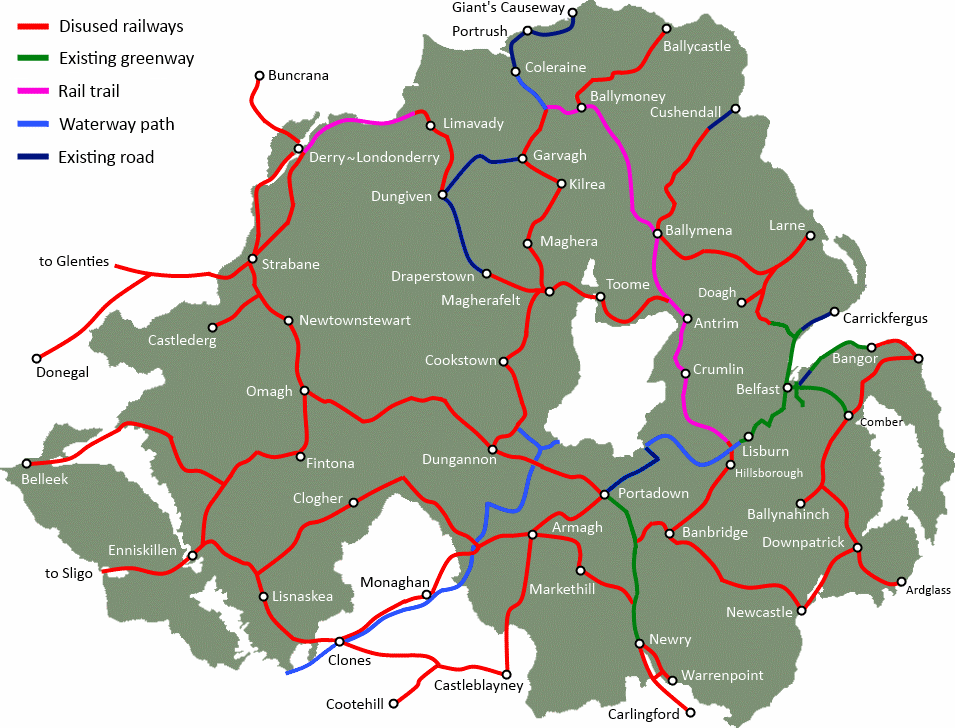
 Completing the main line of the former Belfast and County Down Railway, there is potential to open a 10-mile dedicated cycle and walking path from Downpatrick to Newcastle. Opening access to the Mourne countryside can help to encourage active tourism and encourage healthier lifestyles in Northern Ireland.
Completing the main line of the former Belfast and County Down Railway, there is potential to open a 10-mile dedicated cycle and walking path from Downpatrick to Newcastle. Opening access to the Mourne countryside can help to encourage active tourism and encourage healthier lifestyles in Northern Ireland.
Starting from the working heritage railway in Downpatrick, the track bed heads out following near the line of the Ballydugan Road towards Clough. As the proposed pathway crosses the A25, there is potential for linkages to Clough, Seaforde and its Gardens and Tropical Butterfly House. The line then turns South West towards Dundrum Bay, beginning one of the most spectacular walkways Northern Ireland could boast. The old line hugs the coast, extending into the bay at one point (see picture). Dundrum Bay lies at the edge of the Murlough Bay Nature reserve, lending some wonderful tourism potential to the route.
Continue reading “Downpatrick to Newcastle Greenway” →





 Completing the main line of the former Belfast and County Down Railway, there is potential to open a 10-mile dedicated cycle and walking path from Downpatrick to Newcastle. Opening access to the Mourne countryside can help to encourage active tourism and encourage healthier lifestyles in Northern Ireland.
Completing the main line of the former Belfast and County Down Railway, there is potential to open a 10-mile dedicated cycle and walking path from Downpatrick to Newcastle. Opening access to the Mourne countryside can help to encourage active tourism and encourage healthier lifestyles in Northern Ireland.